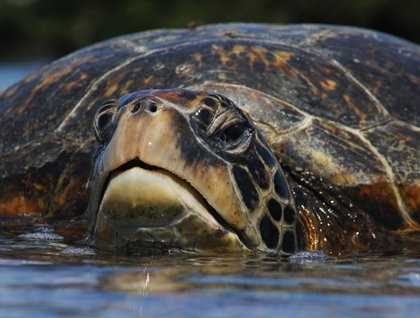The National Geographic Endeavour dropped anchor today off the coast of Isabela, the largest of the Galápagos Islands. We had a wet landing at Urbina Bay (named after one of the early Ecuadorian presidents). During our hike this morning, we could see the uplifting of the ocean floor all over the coastline of this visitor site, an event that took place in 1954. As we walked further into the island we spotted several giant tortoises of different sizes, all belonged to the population of Alcedo Volcano, a dome type of shell because of the grazing off the ground level feeding behavior. We also found the yellow dragons of the Galápagos (land iguanas) which were basking in the sun, and we could easily see how healthy the population is after the eradication of many introduced species like the approximately 150,000 goats that were eradicated from this island. We also went in the ocean for a swim after the hike under the equatorial sun.
In the afternoon we repositioned our mother vessel a few miles north to visit Tagus Cove. Charles Darwin himself disembarked at this visitor site, and today some interesting historic graffiti can be found, from a time when wayfarers sought and found a sheltered harbor here. Some names had been imprinted on the cliffs of this site, there are famous names of sailboats like “The Dove” (the first sailboat to go around the world just by sail), and “The Lucette,” a sailboat that was attacked by a male orca on the west of the Galápagos around the 18th century.
Some of us decided to go snorkeling, kayaking and Zodiac riding while others took the opportunity to hike along tuff cliffs to see the famous Darwin Lake. Along the coastline we found large groups of penguins fishing, flightless cormorants nesting on the lower areas of the tuff cones, many blue-footed boobies, and sea lions. And finally, a wonderful sunset to close the day!







